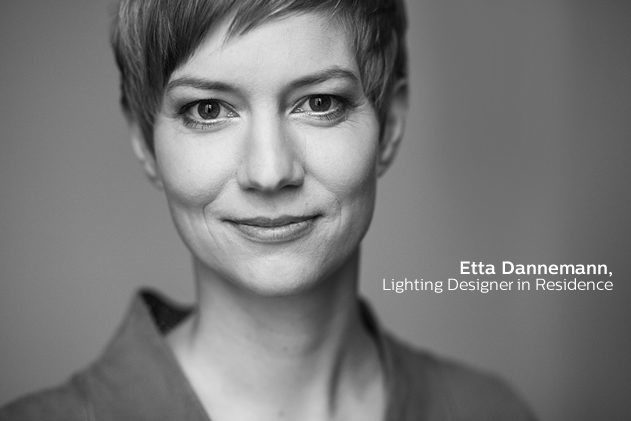Stephanie Cohn from Philips Color Kinetics interviews Etta Dannemann about her thoughts on the company’s Lighting Designer in Residence Program.
In October 2014 Etta Dannemann came from Berlin, Germany, to the Philips Color Kinetics headquarters in Burlington, Massachusetts, U.S., to help pioneer the innovative Lighting Designer in Residence program to reignite a crucial dialogue between engineers and design practitioners. Philips Lighting Professional Systems Global Sub-segment Manager Susanne Seitinger started the program as an answer to bridge a perceived communication gap between the two seemingly connected fields. The nine-month residency would challenge both the research and development team at Philips Color Kinetics and Dannemann to think outside of their usual thought process in an effort to develop products that will best benefit the users.
 |
|
Etta Dannemann, Lighting Designer in Residence. (All photos courtesy of Philips) |
With an architectural engineering degree, seven years of work experience, and five years of work as a project leader at the Berlin-based lighting design studio Dinnebier+Blieske, Dannemann was selected as the first Lighting Designer in Residence. Now, as the program draws to an end, Dannemann is preparing to return home to Berlin and has started reflecting upon this professional and personal journey.
What were some of the projects you worked on during the program?
I worked closely with engineers and designers to develop a new family of fixtures. I taught a lighting designer class to 20 engineers, which was created by Susanne Seitinger and Stephen Lee, a principal mechanical engineer at Philips Color Kinetics. In collaboration with industrial designers, I introduced new application-based and user-centric methods to prepare for development programs. I also worked on a book publication, a research project, and several other small creative projects.
What was your favorite part of the overall experience?
My favorite parts of the experience were the intercultural exchange, being integrated into such a collaborative work environment, and working with many different types of disciplines. Overall, I was really forced to think very differently than I do in my previous job. I felt welcomed into the Philips Color Kinetics community and that my contributions were really appreciated.
What sort of challenges did you face during your residency?
The people I worked with each have different specializations, so understanding my colleagues was sometimes a process. I found, for me personally, it wasn’t easy to express the background knowledge I have as an architect, and I had to be very precise in reflecting and communicating what my priorities are. I am used to solving problems for specific sites and situations, and here I needed to think about what would be best for many applications worldwide—a complete reversal of how I approach projects as a planning professional.
 |
|
Brainstorming and structuring the best lighting approach. |
The goal of the residency is to create a much-needed collaboration between engineering experts and design practitioners—do you think this was accomplished during your residency?
The engineers and I sat in the same department, had workshops, meetings, presentations, and talked on a daily basis. I even had the chance to make a lighting designer’s fixture “wish list” as a resource for the development team. So although our mindsets are quite different, and we often surprised each other, I think we were really able to communicate in a way that was very helpful.
As a lighting designer, why do you think it’s so important to start this sort of dialogue?
We need usable lighting fixtures on the market, and communicating what details contribute to that is only possible with a deep involvement in early development. From a designer’s perspective, it is also helpful to be aware of possibilities that manufacturers have and to gain deeper knowledge about lighting technologies.
What are some of the most important things you learned during the residency that you will use in future professional development?
After being exposed to the possibilities of colored and tunable light, I have greater understanding of spectral distribution, color temperature, color rendering, and color gamut, all of which will also help me to choose white light fixtures. I also now know more about fixture components and control possibilities. I have been introduced to different methods of thinking about design and new group organization principles. On the personal level, I feel like I have developed quite a bit and my English has become a lot better, thanks to the native speakers I interacted with on a daily basis.
 |
|
Workers install the lighting design for a concert. |
What advice would you give to the next Lighting Designer in Residence?
Try to document your perspective and development throughout the process. It’s really fun to see how it changes over time. Also be aware of how many opportunities you have, there is always so much to create!





 CN
TW
EN
CN
TW
EN








